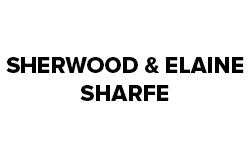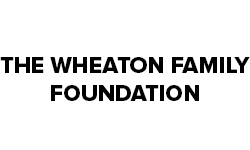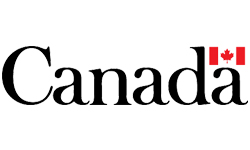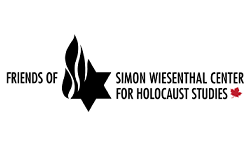Part C: Lifelong Learning Citizens Resources
CURRICULUM OUTCOMES AND INDICATORS
- Timeline of Social and Cultural Injustices in Canada – http://www.edu.gov.mb.ca/k12/cur/socstud/foundation_gr9/blms/9-1-4c.pdf
- Fighting Anti-Semitism Together (FAST): https://www.fightingantisemitism.ca/
- Choose Your Voice: http://www.chooseyourvoice.ca
- Integrating Aboriginal Perspectives into Curricula – http://www.edu.gov.mb.ca/k12/docs/policy/abpersp/ab_persp.pdf
- Canadian Quality of Life Indicators
http://uwaterloo.ca/canadian-index-wellbeing/sites/ca.canadian-index-wellbeing/files/uploads/files/Indicators_of_Quality_of_Life_in_Canada.sflb__0.pdf - Canadian Index of Well-being – https://uwaterloo.ca/canadian-index-wellbeing/
- European Quality of Life Indicators – European Statistical System Committee http://epp.eurostat.ec.europa.eu/portal/page/portal/quality_life/introduction (link no longer active)
- Quality of Life Index – http://www.economist.com/media/pdf/QUALITY_OF_LIFE.pdf
- Bangladesh Factory Collapse Retailers’ Response – http://online.wsj.com/article/SB10001424052702304176904579113110057660666.html
- Dropping the ball on Bangladesh – Rana Plaza Disaster http://www.theguardian.com/commentisfree/2013/sep/18/bangladesh-factory-victims-corporations
- Youth for Human Rights website – http://www.youthforhumanrights.org
- Richard Wilkinson: How economic inequality harms societies – http://www.ted.com/talks/richard_wilkinson#t-36142
- Pearson Saskatchewan Social Studies 6
- Indigenous Concepts of Wealth
- http://jamesshelley.net/2011/03/indigenous-wealth/
- http://www.ted.com/talks/wade_davis_on_endangered_cultures
- https://web.archive.org/web/20160603034330/https://www.pachamama.org/blog/we-are-not-poor-people-learning-from-indigenous-perspectives-of-wealth
- https://www.theguardian.com/world/2016/apr/20/indigenous-health-wealthy-nations-not-always-better-than-developing-countries
For further information on the Quality of Life Index and Indicator visit the suggested websites.
Canadian Quality of Life Indicators
1. Political rights
2. Health
3. Education
4. Environment
5. Social programs/conditions
6. Personal well being
7. Safe communities
8. Economy
http://uwaterloo.ca/canadian-index-wellbeing/sites/ca.canadian-index-wellbeing/files/uploads/files/Indicators_of_Quality_of_Life_in_Canada.sflb__0.pdf
Canadian Index of Well-being
1. Community Vitality
2. Democratic Engagement
3. Education
4. Environment
5. Healthy Populations
6. Leisure and Culture
7. Living Standards
8. Time Use
https://uwaterloo.ca/canadian-index-wellbeing/
European Quality of Life Indicators
1. Material living conditions
2. Productive or main activity
3. Health
4. Education
5. Leisure and social interactions
6. Economic and physical safety
7. Governance and basic rights
8. Natural and living environment
9. Overall experience of life
Source – European Statistical System Committee http://epp.eurostat.ec.europa.eu/portal/page/portal/quality_life/introduction (link no longer active)
Quality of Life Index
1. Material Wellbeing – GDP /person
2. Health
3. Political stability and security
4. Family Life
5. Community Life
6. Climate and Geography
7. Job Security
8. Political Freedom
9. Gender equality
http://www.economist.com/media/pdf/QUALITY_OF_LIFE.pdf

Marketing and Communications, University of Saskatchewan
CROSS CURRICULAR CONNECTIONS
Themes
- Personal and Philosophical: Students will reflect upon:
- self-image and self-esteem; and,
- self and life, and on their beliefs and values and those of their society.
- Social, Cultural, and Historical: Students will
- look outward and examine their relationships with others, their community, and that of the world; and,
- consider the historical context.
- Environmental and Technological: Students will:
- explore the elements of the natural and constructed world and the role of technology and related developments in their society.
- Communicative: Students will:
- consider the role of communication in their lives and the ideas and technologies that help people become effective communicators.
Treaty Education
- TR6: Analyze the concepts, structures and processes which have been developed for the purpose of treaty implementation.
- SI6: Analyze the importance of the preservation and promotion of First Nations and Métis languages.
- HC6: Analyze how the movement towards the fulfillment of treaty obligations has positively affected all people in Saskatchewan.
- TPP6: Investigate the role of the Treaty Table and the role of the Office of the Treaty Commissioner (OTC) in promoting good relations between signatories.
Health
Understanding, Skills, and Confidences (USC)
- USC6.1 Analyze the factors that influence the development of personal standards and identity, and determine the impact on healthy decision making (including cultural norms, societal norms, family values, peer pressures, mass media, traditional knowledge, white privilege, legacy of colonization, and heterosexual privilege).
- USC6.2 Appraise the importance of establishing/maintaining healthy relationships with people from diverse backgrounds who may or may not express differing values, beliefs, standards, and/or perspectives (i.e., people of various ages, cultures, socio-economic status, faiths, family structures, sexual orientations, and cognitive/physical abilities)
- USC6.5 Analyze the influences (e.g., cultural, social) on perceptions of and personal standards related to body image, and the resulting impact on the identities and the well-being of self, family, and community.
- USC6.6 Develop and demonstrate the knowledge, skills, and personal standards necessary for establishing and supporting safe practices and environments related to various community activities.
Science
Life Science: Diversity of Living Things (DL)
- DL6.4 Examine and describe structures and behaviours that help:
- individual living organisms survive in their environments in the short term and,
- species of living organisms adapt to their environments in the long term. [CP, DM, SI]
- DL6.5 Assess effects of micro-organisms on past and present society, and contributions of science and technology to human understanding of micro-organisms. [CP, DM, SI]
FURTHER INVESTIGATION SUGGESTIONS
- Hunger Games
- The Giver
- Teachers found reading this book to the students brought in another perspective that supported student’s connections to the concepts presented in this grade in all areas of citizenship.
GLOSSARY
“Text from Vocabulary.com, Copyright ©1998-2016 Thinkmap, Inc. All rights reserved.”
Fair – fairness
When used as a noun, fair refers to a traveling show with games, rides, and farmers showing off their prized pigs, similar to a carnival. As an adjective, it gets a bit trickier.
The adjective fair, has several different meanings. If someone says, “That’s not fair!” they mean whatever happened wasn’t just or done in an unbiased way. If you have fair skin, you have a pale complexion. If the weather is fair, it’s a gorgeous day out. If the rides at the fair were fair, then they were just so-so. And watch out if the umpire shouts “fair ball!” during the baseball game — that means it was hit within the foul lines.
Human Right
(Law) any basic right or freedom to which all human beings are entitled and in whose exercise a government may not interfere (including rights to life and liberty as well as freedom of thought and expression and equality before the law)
Injustice
Life isn’t fair, and that quality is exactly what defines injustice: something unfair that happens, often in violation of a basic human right.
In the early 19th century in the United States, women could not legally vote, but they fought back against this injustice and eventually won voting rights. The word comes from a Latin phrase that literally means “not right,” and injustice is the opposite of justice, which is a fair and righteous act. Injustice can be general or specific, like the injustice suffered by poor people everywhere, or an individual act of injustice committed by some unkind person.
Institutions
Universities, banks, and hospitals are all institutions. Until you arrived at the bank, you’d forgotten that financial institutions were closed for the holiday. Thank goodness for the ATM!
The noun institution also refers to a long held custom or practice in society. Even if your parents divorced when you were young, you might strongly believe in the institution of marriage. Or you might believe that once you enter the institution of marriage, your next stop will probably be a mental institution. Institution can also describe the act of putting something in place. The institution of new traffic rules — green means stop and red means go — caused a bit of confusion.
Justice
Justice is the quality of being just or fair. Super heroes fight for justice because they want everything to be fair and not let bad guys win. Just ask Wonder Woman, Superman, or any other member of the Justice League.
Justice is usually associated with the law. A judge is also known as a justice, and the point of the law is to keep everything in a society fair according to society’s rules. Justice (capital “J”) is also the statue of a blindfolded woman holding scales and a sword. If something is brought to justice, the good guys have been rewarded and the bad guys punished — the scales are even.
Need
A need is something essential: people need food, water, and shelter. When you lack them, you’re in need.
Besides physical needs like sleep, people have lots of psychological needs: like for love and friendship. To pass an exam, you need to study. To lose weight, you need to exercise more and eat less. Drug addicts feel a physical need for their drug — so do smokers. Often, we feel we need things that we actually just want: like a new video game or car. When someone is trying hard to get something, they might say “I need it!”
Quality of Life
Your personal satisfaction (or dissatisfaction) with the cultural or intellectual conditions under which you live (as distinct from material comfort)
Sustainability
“Sustain” means to last over time, so sustainability is the ability of something to last. As a civilization, we are concerned about the sustainability of our planet.
Sustainability became a big idea after people began to realize that we were using up our natural resources, so you’re most likely to come across the word when you’re reading about recycling and energy use. If you hear someone talking about sustainability in the context of energy, they’re probably talking about alternatives to oil or coal — both of which will run out in the future. A sustainable source of energy is something that’s always there — like water or wind.
Economic (sustainability)
Economic is all about how money works, but something economical is a good deal. You might take an economic studies class to understand the ebb and flow of cash in the world, but if you buy a used textbook for it, you’re being economical.
Economic appeared in the late 1500s, referring to household management, but its sense of relating to a country’s wealth first appeared in the 1800s. It’s still related to economics (the study of the transfer of wealth) or economy (a country’s wealth), but not thrifty (that’s the other one).
If you want an adjective related to the economy, economic is your word. If you want a word to describe something that saves money, like buying used textbooks, use economical.
The use of various strategies for employing existing resources optimally so that that a responsible and beneficial balance can be achieved over the longer term. Within a business context, economic sustainability involves using the assorted assets of the company efficiently to allow it to continue functioning profitability over time.
http://www.businessdictionary.com/definition/economic-sustainability.html#ixzz37frqTzLg
Environmental (sustainability)
Environmental is the adjective form of environment, referring to a surrounding area. The word is usually used to refer to our ecology and the forces that act to change it.
The noun environment, meaning the “state of being environed,” first appeared around 1600. The word as referring to our natural surroundings was first recorded in 1827, and the popular idea of environmental concern in an ecological sense first appeared in 1956. In recent decades, the movement toward environmental awareness has grown rapidly. In a 1997 interview, environmentalist Barry Commoner noted that “Environmental concern is now firmly embedded in public life.”
The maintenance of the factors and practices that contribute to the quality of environment on a long-term basis.
http://www.businessdictionary.com/definition/environmental-sustainability.html#ixzz37fs7cRhV
Social (sustainability)
If you are social, you like to be around people. A social butterfly is someone who is social or friendly with everyone, flitting from person to person, the way a butterfly might.
The word social comes from the Latin socius meaning “friend”. When you’re being social, you’re everyone’s friend. Go to a social, or mixer, and you might make a lot of new friends. Stand in the corner pouting, however, and you’re being anti-social. Humans are described as social beings — ones that tend to move or live in groups together, like penguins!
The ability of a community to develop processes and structures which not only meet the needs of its current members but also support the ability of future generations to maintain a healthy community.
http://www.businessdictionary.com/definition/social-sustainability.html#ixzz37fsKYc4k
Want
In all its forms, want has to do with the lack of having and the desire to have. You can want or desire something you’d like, or you can be in want of something you need.
The word want goes back to the 12th century and the Old Norse language, where vanta meant “to be deficient,” or “in want.” If someone keeps bugging you, you might lose patience and ask, “What do you want?” If you are seeking employment, check the “want ads” or look for signs saying “Help Wanted.” If you are a “wanted criminal,” you might have trouble getting hired.
APPENDIX
© 2024 Concentus Citizenship Education Foundation Inc. All Rights Reserved.









